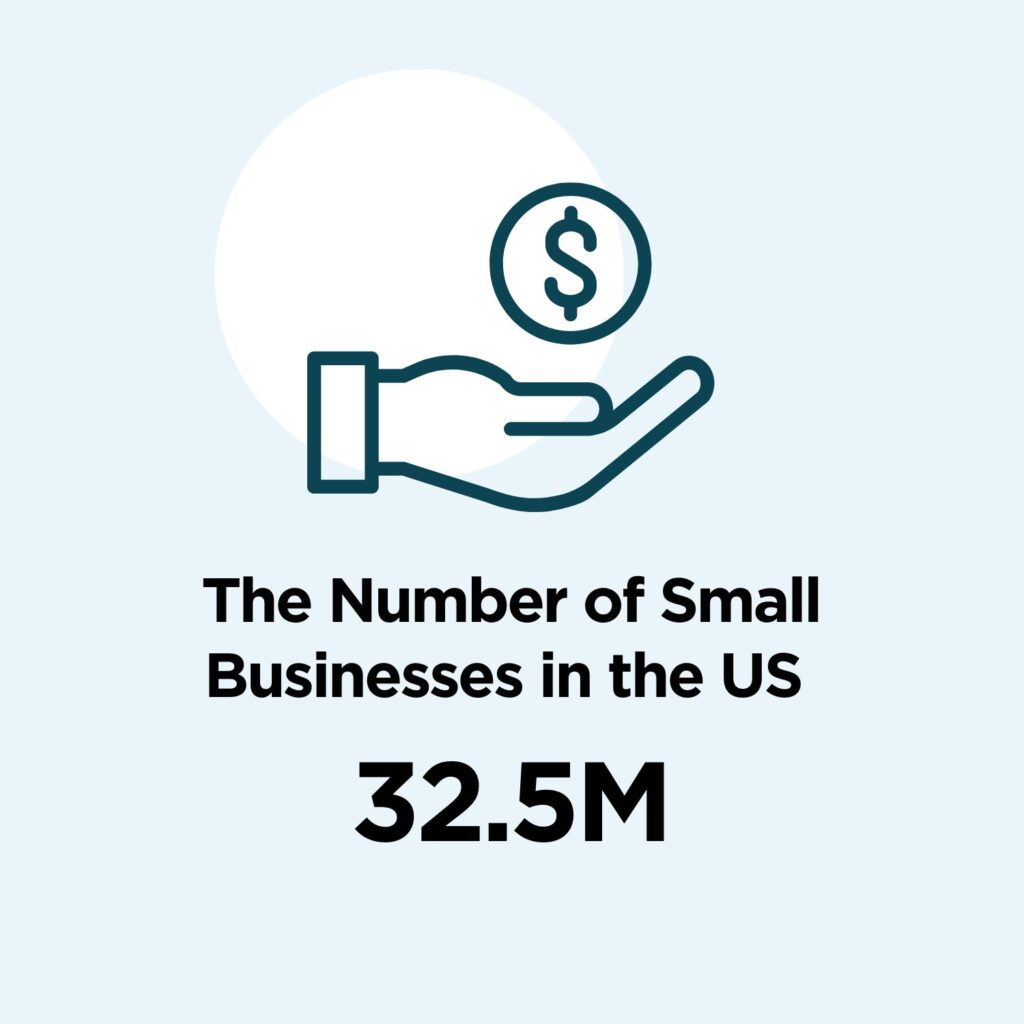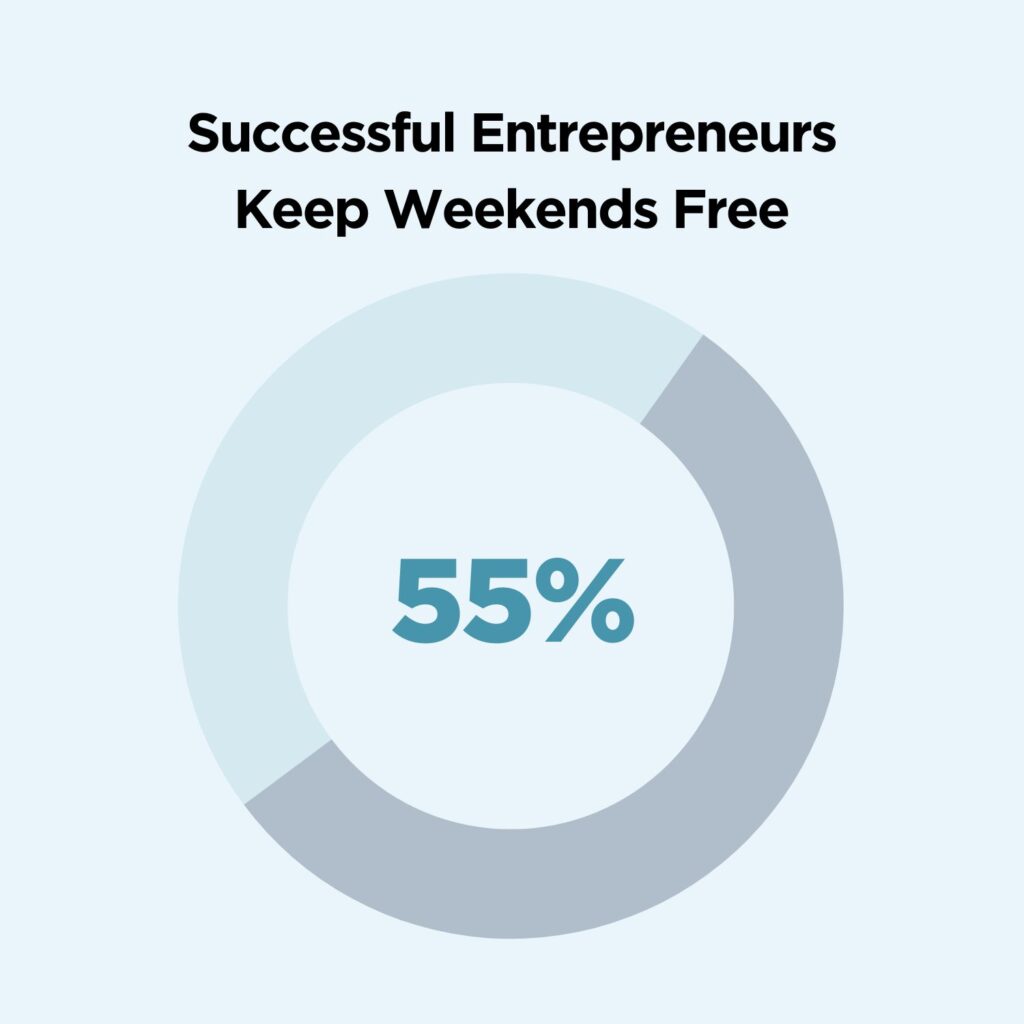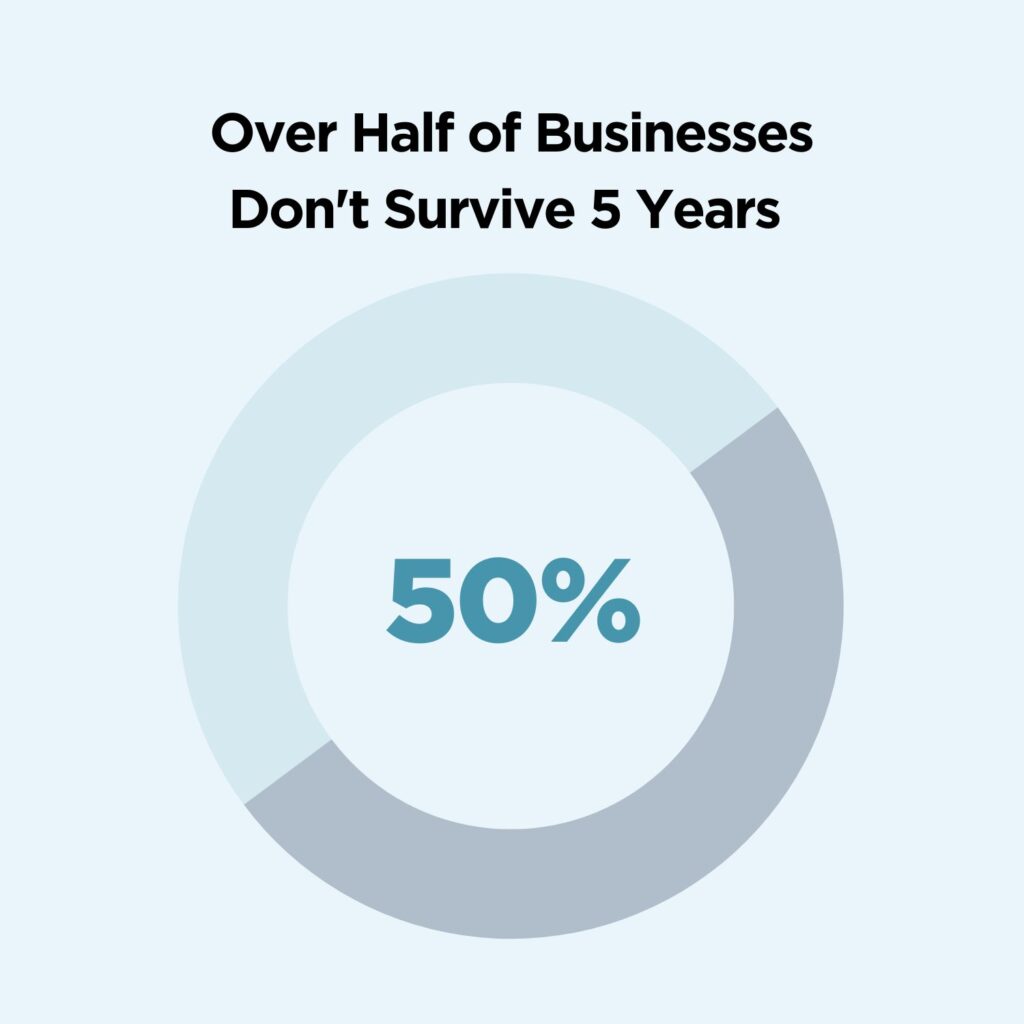Why do businesses fail or succeed? Which entrepreneurs make it… and which don’t?
Today, you’ll learn exactly why a business succeeds or fails. Here are the 47 main successful business statistics.
Want to learn more? Read on!
The most important successful business statistics in 2024
- There are 32.5 million small businesses in the US. They make up 99.9% of all businesses.
- Globally, there are 582 million entrepreneurs.
- 50% of businesses fail in the first five years.
- Some of the most important reasons people start businesses are to be their own bosses, because they’re unhappy with their corporate careers, and to pursue their passion.
- The average age of founders is 42.
- Older founders are more successful, too. A 50-year old founder is nearly twice as likely to succeed than a 30-year old founder.
- Serial entrepreneurs outperform new entrepreneurs with 98% higher sales.
- Successful entrepreneurs spend time with their families. 58% spend time with loved ones in the evenings and 55% devote their weekends to them.
- Some of the biggest challenges for businesses are a lack of capital or cash flow (23%), recruiting employees (19%), and advertising and marketing (15%).
- The biggest reason startups fail is no product-market fit (34%).
Business statistics
How many businesses are there in the world? How do they get started? And in what industries? Here are the most important small business statistics you need to know.
- There are 32.5 million small businesses in the US (99.9% of all businesses).

- US small businesses employed 59.9 million people in 2016.
- 98% of businesses in the US have fewer than 20 employees.
- Most small businesses are self-funded.
- Small business owners tend to use $10,000 on starting their businesses.
- One-third of non-employer firms use no startup capital at all.
- The most popular industries to start a business in are retail (13%), business services (13%), construction and contracting (12%), food and restaurant (9%), and residential and commercial services (9%).
- Sagework reports that accounting, tax prep, bookkeeping, and payroll services are the most profitable services at 18.3%.
- In 2020, the most profitable industries in the US were, according to Statista:
- Banks
- Broadcasting
- Financial services
- Transportation
- Investments and asset management
- Software
- Real estate
- Semiconductor
- Precious metals
- Information services
- Drugs (pharmaceutical)
- Brokerage and investment banking
- 43% of US public companies are backed by venture capital.
- Around 50% of businesses in the US are home-based.
(Sources: SBA, SBE Council, SBA, SBA, Stanford University, Statista, Inc)
Entrepreneur statistics in 2024
What are the main entrepreneur statistics? Here’s all you need to know about who ends up starting a business and why.
- There are 582 million entrepreneurs in the world, according to a Global Entrepreneurship Monitor survey of 65 global economies.
- In the US, the number of residents out of 100,000 who started a business in 2018 were:
- Latino 510/100,000
- Asian 330/100,000
- White 290/100,000
- Black 240/100,000
- 11.9 million US businesses were women-owned in 2017.
- The reason people start businesses is that they think that they have more to offer than what their resumes show and they can make more money by starting a business.
- 29% of business owners say that their biggest motivation for starting a business is that they’re ready to be their own bosses. 17% were unhappy with their corporate careers, 16% want to pursue their passion, 12% say an opportunity presented itself, 9% had the inspiration for a new business, 7% weren’t ready to retire, and 7% were laid off.
- The overall average age of founders is 42. Software startup founders are, on average, 40 years old and oil and gas technology company founders are 47.
- Millennials start 12% of all businesses. Generation X owns 44% of businesses and Boomers 41%. The silent generation owns 2% of businesses.
- 34% of small business owners have a high school degree. 28% have a college degree.
(Sources: Global Entrepreneurship Monitor, Statista, Strategic Management Journal, Harvard Business Review, Guidant Financial)
Business success rate
What percentage of businesses are successful? And what businesses have the highest success rate? Here are the most important successful business statistics.
- Serial entrepreneurs outperform new entrepreneurs with 98% higher sales.
- The average founder of the fastest-growing tech companies is 45 years old.
- A 50-year old founder is nearly twice as likely to succeed than a 30-year old founder.
- B2B buyers say that the most important qualities they look for in business owners they buy from are:
- Taking the time to understand their needs
- Involving them in decisions
- Brainstorming
- Showing useful information
- Showing commitment
- Fulfilling promises
- Adhering to agreed-on principles and standards.
- 58% of successful entrepreneurs spend time with their loved ones in the evenings. 55% keep their weekends free for loved ones.

- One-third have turned to a mentor or support group.
- 49% have invested in social media, PR, and advertising.
- 50% of the world’s 20 most valuable brands were founded between 1950-1999. 20% were founded between 1900-1949 and 25% between 1850-1949.
- 97.6% of the founders of the most valuable brands were founded by men (which goes to show what the power structures have looked like in business over the past decades).
- 44.2% of the founders of the world’s most valuable brands were between 20-29 years old at the time they founded their companies. 25.6% were between 30-39, 18.6% between 40-49 and 11.6% between 50-59.
- 65% of the most valuable brands were founded by co-founders rather than a single founder.
- 85% have their headquarters in the US. 5% are headquartered in South Korea, 5% in France, and 5% in Japan.
- 45% of the most valuable brands are in the tech industry. 10% are in clothing, 10% in food, 10% in telecommunications. 5% are conglomerates, 5% in transportation, 5% in financial services, and 5% in retail.
- 30% of the most valuable brands have a revenue of $50-99 billion, 25% up to $49 billion, 20% between $100-199 billion, 15% between $250-299 billion, 5% between $200-249 billion, and 5% over $300 billion.
- 60% of the 20 most valuable brands started out as self-funded ventures.
- There are 585 dollar billionaires in the US. 55.8% of them are self-made.
(Sources: Stanford University, Kellogg School of Management, Chicago Booth Review, Xero, LuisaZhou.com, Wealth-X)
Business failure rate
How many businesses fail? Do 90% of businesses fail? 50%? Here’s what you need to know about business failure statistics.
- Two-thirds of businesses with employees survive at least two years.
- Half of businesses survive past five years. In other words, 50% of businesses don’t survive past their first 5 years.

- Downturns have no significant effect on businesses’ survival rate.
- 34% of startups fail because they don’t have a product-market fit. 22% fail because of marketing problems.18% fail because of team issues.
- In another survey, 42% of businesses said they failed because they had no market fit. 29% failed because they ran out of cash. 23% didn’t have the right team. 19% failed because they were outcompeted.
- According to Guidant Financial, 23% of small business owners say that their biggest challenge is a lack of capital or cash flow. 19% say it’s recruiting employees, 15% say it’s advertising and marketing, 14% say it’s time management, 13% administrative work, 8% managing/providing benefits, and 7% have other challenges.
- 45% of business owners say it is moderately or very challenging to generate new business.
- Entrepreneurs who have succeeded in the past are no more likely to succeed in the future.
- Entrepreneurs who fail with their past ventures are more likely to fail than new entrepreneurs.
- 14% of entrepreneurs who fail have turned to a mentor or support group.
- 20% of entrepreneurs who fail have invested in social media, PR, or advertising.
(Sources: SBA, Failory, CBInsights, Statista, Leibniz Information Centre of Economics, Xero, Guidant Financial)
Over to you!
There you have it! Now you know what the most important successful business statistics are.
Want to learn more about building your own business?
Read more:
How to Grow Your Online Business
The Best Online Business Models








